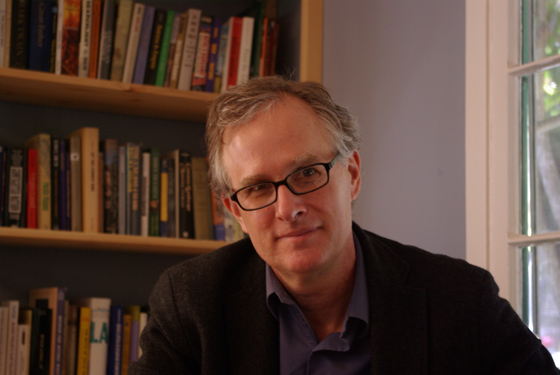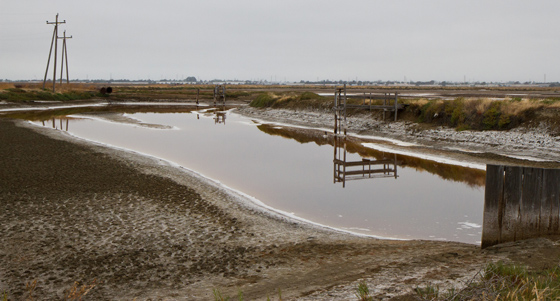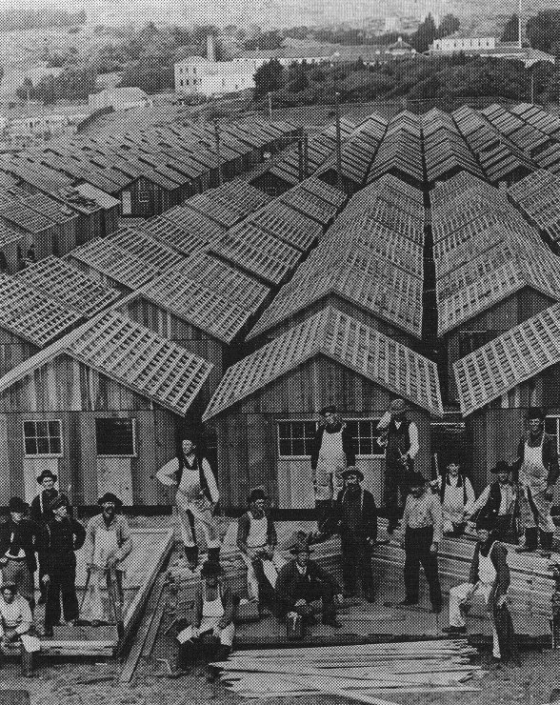Dedicated to advancing scholarly and public understanding of the past, present, and future of western North America, the Center supports research, teaching, and reporting about western land and life in the United States, Canada, and Mexico.
Conservation Is Up in a Down Economy Out West

Graph by Geoff McGhee
From High Country News
By Jon Christensen, Jenny Rempel, and Judee Burr
The Great Recession, it turns out, may have been good for one thing in the West: private land conservation. From the tiny Orient Land Trust in Colorado’s San Luis Valley, which has nearly doubled its holdings to 2,260 acres, to the 138,041 acres of ranchland protected by the California Rangeland Trust over the last five years, statewide and local land trusts in the West have done better than ever recently, even as many environmental advocacy groups continue to trim budgets and federal funding for conservation falters.
The federal Land and Water Conservation Fund, which agencies rely on to acquire valuable private lands, suffered a 38 percent cut and protected just over 500,000 acres over the last five years. During the same period, private nonprofit land trusts protected 20 times as much undeveloped land — 10 million acres nationwide, according to data in a new census of 1,700 land trusts in the national Land Trust Alliance.
Land trusts also grew in other ways, including a 19 percent increase in paid employees and contractors, a 36 percent increase in operating budgets, a 70 percent increase in volunteer numbers, and a near tripling of long-term endowments. Land trusts protect land by either buying it outright or paying for a conservation easement, which restricts or removes the landowner’s right to develop open land. Landowners can also donate property and easements and then receive a break on their income taxes from the federal government and some state governments. The latest gains bring the total area protected by the nation’s land trusts to 47 million acres — more than twice the area covered by all of the national parks in the Lower 48 states.
In fact, private land conservation is now shaping the future of much of the West as decisively as development.
Go West: Wired Magazine Interviews Center Director Jon Christensen

Jon Christensen
From Wired.com:
A bit of transparency: Wired operates in San Francisco. We enjoy the innovation culture of Silicon Valley, the lush nature of Northern California, the crazy politics and social movements of the Western edge of the continent.
But we’re not alone in this. Fascination with this region, and the myths and ideas surrounding it, isn’t limited to locals. The legend of the American West has been told again and again since the 1800s. It survives today through a variety of voices, from AMC’s Hell On Wheels to George W. Bush’s presidential campaigns.
Jon Christensen, executive director of the Bill Lane Center for the American West at Stanford, is a historian who studies the place of the West in the modern world. He runs an independent research outfit, working with everyone from policy makers to journalists to research the area and its cultural significance.
On this week’s Storyboard, Christensen gently disagrees with most of host Adam Rogers’ ideas about the West while agreeing to be amazed by the place—and to to discuss how the Western narrative recapitulates all over the world. Christensen also lays out some ideas about how the Western approach to ecology and the environment might save an overpopulated planet.
Reporting in Indigenous Communities: A New Guide for Journalists

Duncan McCue debuts Reporting in Indigenous Communities
The Bill Lane Center for the American West is pleased to announce the launch of Reporting in Indigenous Communities (www.riic.ca)— an exciting new online journalism education resource for journalists who cover indigenous communities in Canada, the United States, and around the world. Designed for reporters by a reporter, RIIC offers useful ideas and practical methods for finding and developing news stories in Native American communities.
“The goal is to help journalists tell better indigenous news stories,” explains Duncan McCue, creator and curator of the RIIC site. “The site offers real-world solutions to the many challenges journalists face when reporting in indigenous communities.” McCue is an award-winning network TV reporter for the Canadian Broadcasting Corporation (CBC), based in Vancouver, British Columbia. He is a registered member of the Chippewas of Georgina Island First Nation in Ontario, Canada.
McCue created RIIC while on a John S. Knight Fellowship at Stanford University in 2010-11 and developed the web site with a media fellowship from the Bill Lane Center for the American West in the fall of 2011.
Rural West Initiative's John McChesney Reports on North Dakota Oil Boom on NPR

On the road from Williston to New Town, N.D., gleaming new pumps pull oil from freshly fracked wells. Some residents think it's possible for farming culture to co-exist with an oil boom, but they say the state needs to get a grip on the accompanying chaos.
The tough economy has taken its toll on most states, putting budgets deep in the red and putting people out of work.
But North Dakota has a low 3.5 percent unemployment rate and a state budget with a billion dollar surplus. That's because of a major oil boom in the western part of the state, a discovery of at least 2 billion barrels to be gained by fracking — the controversial process of injecting fluid deep into underground rock formations to force the oil out.
The find could be the largest ever in the lower 48 states. It's expected to make North Dakota the third largest producer of oil after Alaska and Texas. But many residents of the oil boom region are not singing "Happy Days Are Here Again" — they're saying "enough."
California Has a Historic Opportunity to Do Right by Indians and the Land

Ron Goode, North Fork Mono Tribal Chairman, teaches children about California Indians and the land near the tribe's Lost Lake restoration site in Fresno County. Photo by John Minkler, Center for Multicultural Cooperation.
Some California Indian tribes have the potential to regain their ancestral lands and restore age-old relationships between people and the environment in the Golden State.
An unlikely turn of events has opened up this historic opportunity. PG&E’s 2001 bankruptcy resulted in the formation of the Pacific Forest and Watershed Lands Stewardship Council, a nonprofit designed to distribute lands PG&E agreed to donate as part of its settlement agreement. Now, after years of being denied rights to their traditional lands, tribes have the opportunity to recover some of what was previously theirs.
However, tribal entities are not the only parties interested in these properties. Federal and state agencies, county governments and other interested organizations are submitting competing bids. The ouncil’s board of directors this month met to decide who will receive the latest round of divested lands – unfortunately, none of the board’s recommendations side with traditional tribal owners this time. Hopefully, the council will do better for the tribes in our state in the future.
San Francisco Bay Conservation 2.0

Photograph: Old Salt Ponds at Eden Landing by Jaymi Heimbuch, via Flickr
If I were to tell you one thing about the nature of the San Francisco Bay, it is this: The bay is strange. And it is getting stranger.
Get used to it, says Emma Marris. Not only that, she says: Embrace it. Celebrate it. Help create this new bay nature. Call it Bay Nature 2.0.
Marris is a whip-smart writer for the prestigious science journal Nature and the author of a new book, Rambunctious Garden: Saving Nature in a Post-Wild World, which is turning the conservation movement upside down.
Rather than struggling to restore nature to some impossible historical ideal, she says, we should work with the mixed-up world we've got to try to make it better. Rather than fighting invasive species, we ought to learn to live with them as part of the mix. Rather than fighting rearguard battles to preserve nature in ever-smaller enclaves, we need to go on the offensive and create beachheads for new forms of conservation everywhere.
Read the rest of Jon Christensen's story in the San Francisco Chronicle »
When Girls First Ran: Growing Up with Mary Decker

Photograph: Harry Kran-Annexstein via Flickr
Kevin Hearle, a visiting scholar at the Bill Lane Center for the American West, has written a moving account from his youth, when he attended a Southern California junior high school with the future Olympian, Mary Decker. This excerpt is taken from the website of our collaborators, Zócalo Public Square.
The battle of the sexes came to Portola Junior High School in Orange, California one day in the spring of 1973. When the bell rang for nutrition break in the middle of that morning, the entire student body poured out of the classrooms and marched across the basketball courts and football fields to the track on the far side of campus.
“What’s going on?” I asked.
“They’re going to race,” someone told me.
“Who’s going to race?” I asked.
Paul Hargrove, a sprinter and the ninth-grade varsity quarterback, and Dave Galloway, a sprinter and the eighth-grade varsity quarterback, were going to race a mile against a girl.
Read the rest of Kevin Hearle's story at Zócalo Public Square »
Senior Faculty Search for Scholar of the American West at Stanford
Stanford University is seeking to make a senior faculty appointment with research and teaching interests focused on the American West. The person appointed will be expected to have significant involvement with the Bill Lane Center for the American West, including possibly playing a leadership role. The Lane Center is an interdisciplinary teaching, research, and public education center that focuses on the American West, which is defined as embracing the United States west of the 100th meridian, Canada west of Ontario, and all of Mexico – though the center of gravity remains the U.S. portion of the continental West. More information about the Bill Lane Center can be found here on the Center’s website.
This search will span several different disciplines, and the appointment might be made in any one of several different Stanford departments, including but not limited to Political Science, History, Economics, and Anthropology. In whatever field, candidates should have substantial scholarly engagement with the kinds of topics that have peculiar incidence in the American West – e.g., the westward movement and the historical evolution of the region; environmental issues and natural resource management, especially water; immigration; Native Americans; regional institutions such as the Colorado River Compact, the Western Electricity Coordinating Council, or the Western Governors’ Association; state and local government; the Federal presence in the West; and the distinctive features of the regional economy, including extractive industries and high-tech.
A Different "Occupy" Movement: Women's Activism after San Francisco's 1906 Earthquake

More than a century before the current "Occupy" movement, a refugee of San Francisco's 1906 disaster took over a one-room earthquake cottage and used it to launch a month-long protest of the city’s relief policy. Working-class mother Mary Kelly had applied for a similar cottage, but her application had been rejected. The episode finally ended when the city tore the cottage down, board by board, with Kelly still inside of it.
In her new book, Saving San Francisco: Relief and Recovery after the 1906 Disaster,Stanford historian Andrea Rees Davies uses Kelly’s story to illuminate the paradox of working-class women’s activism in 1906 San Francisco. Left homeless, Kelly sought a cottage in order to return to her traditional female role as her family’s homemaker. But her effort to obtain the cottage led Kelly to boisterous public activity that was anything but traditionally feminine. Thus, Kelly’s effort to recreate her traditional gender role led to a surprising result—she behaved in ways that were far outside that role. And Kelly was not alone. As Davies explains, Kelly was one of many working-class women who became politicized over the necessities of domestic life—shelter, food, and clothing.
The story of San Francisco’s 1906 earthquake and fire is well-known. The violent quake struck America’s ninth-largest city on April 18. It lasted a terrifying sixty-five seconds, and it pulled apart buildings and gas lines. Firefighters and residents struggled in vain to stop the raging fires that consumed the city over the next three days. Despite their efforts, the disaster killed thousands and destroyed over five hundred blocks of businesses and homes, leaving hundreds of thousands of San Franciscans homeless—including working-class families like Mary Kelly’s.
Read more at Gender News, from the Michelle R. Clayman Institute for Gender Research



